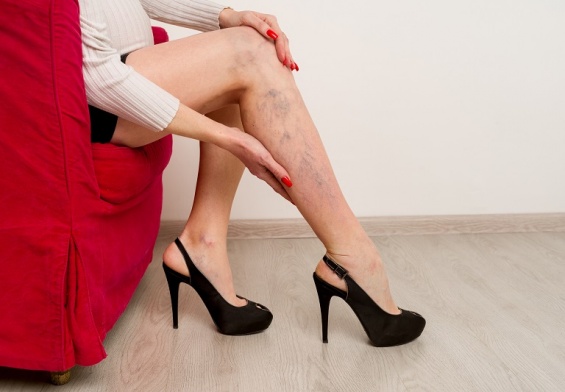Spider veins are similar to varicose veins but not as severe. They are a common obstacle to smooth, healthy looking skin that many people face. Some studies have suggested that they affect up to half of adult women in the United States and many men as well. This condition is generally not as serious as varicose veins but it can be unsightly and on occasion uncomfortable. The technical name for spider veins is telangiectasias and what it really is a problem with the tiny blood vessels just below the skin. Spider veins can occur anywhere where there are veins close to the surface of the skin but they are most common on the legs, thighs, and face. They will often appear as dark tree or spider web-shaped lines in red, blue, or purple. This is a very common condition that many people will face and there are a number of excellent treatment options that can be found at a vein center in New Jersey to remove or reduce their appearance. In order to get a spider vein treatment in New Jersey, all one needs to do is talk to a physician about the options and choose which procedure best suites their individual needs.
Why do spider veins develop?
Spider veins are generally caused by problems with circulation. This is the simple explanation for the discolored and twisted veins that become visible. This typically isn’t a harmful condition though it can be unsightly and somewhat embarrassing. When the circulation through the affected veins is not at is full capacity the blood is allowed to pool up and stagnate, which in turn bloats the veins and makes them become visible. As the circulations gets worse and worse, the spider veins will typically become darker and more and more pronounced.
Spider veins can occur at anytime in life, though those who are older are at a higher risk for developing them. For some people, they will begin to appear while in their 20’s. Others who are slightly luckier may not experience the condition until they are in their 40’s. Women are much more likely to develop spider veins than men but many men will experience this condition as well. Men also have the lucky advantage that body hair growth will cover a lot of spider veins making treatment unnecessary.
What are the risk factors for developing spider veins?
There are many factors that contribute to the development of this extremely common vein condition. There is much evidence supporting the theory that genetics have a large role to play. Many people seem to inherit spider veins from their parents. Those who have parents who have had spider veins are much more likely to develop them themselves. Body chemistry and hormone levels, which both are strongly linked to genetics, are known to affect the development of spider veins.
Weight gain is another factor that puts many people at risk for developing spider veins. Weight gain means that the heart has to work harder to pump the blood through the veins and it may not be able to continue circulating the blood as robustly as before the weight gain. When the circulation of the blood decreases spider veins are more likely to occur. The weight gain that accompanies a healthy pregnancy also puts many women at risk for spider veins. For these women, the weight gain is very rapid, which puts stress on the heart. The changes in hormones that come with pregnancy can also be a contributing factor to spider vein development.
Hereditary factors do seem to play a large role in the development of spider veins, but they are really only a small piece of the puzzle. The main risk factors come from the lifestyle choices we make. Those who lead a sedentary existence will be much more likely to develop spider veins than those who are active. Exercise is one of the best ways to avoid spider veins as getting the blood pumping will treat the root cause. Occupations that require people to stand in one place for long periods of time such as factory line workers and line cooks put the people doing them at risk for developing spider veins. When we stand in one place for a long time it becomes harder for the heart to effectively pump all of the blood out of the legs and into the rest of the body. This means that some of it will be allowed to pool up and possibly create spider veins.
What treatments are available for spider veins?
There are many effective treatments for this condition that are both quick and easy. Most treatments work to eliminate spider veins by closing off the damaged veins and rerouting the blood through healthier ones. Sclerotherapy is a common treatment that accomplishes just this by injecting a solution into the vein that seals it off. There are a variety of treatments like this such as Endovenous laser treatment, which works to seal the damaged vein by heating it with a laser.


